 W
WKamal Kishore Ahuja is a physiologist and the managing and scientific director of JD Healthcare, the holding company for The London Women's Clinic, The London Ultrasound Centre, The London Sperm Bank, The London Egg Bank and the Bridge Centre. He was a pioneer of egg sharing in the UK in the 1990s and released an app to help women search for donor sperm in 2016.
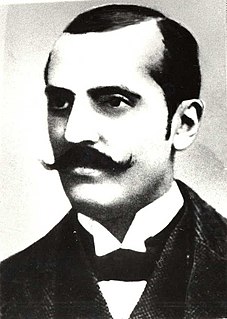 W
WGeorge Assaky was a Romanian physician.
 W
WKarl Ernst Ritter von Baer Edler von Huthorn was a Baltic German scientist and explorer. Baer is also known in Russia as Karl Maksímovich Ber.
 W
WFrancis (Frank) Maitland Balfour, known as F. M. Balfour, was a British biologist. He lost his life while attempting the ascent of Mont Blanc. He was regarded by his colleagues as one of the greatest biologists of his day and Charles Darwin's successor.
 W
WKarl Dietrich Gerhard Barfurth was a German anatomist and embryologist born in Dinslaken.
 W
WHelen Irene Battle was a pioneering Canadian ichthyologist and marine biologist. She was the first Canadian woman to earn a PhD in marine biology and she was also one of the first zoologists to engage in laboratory research. She was an emeritus professor of zoology at the University of Western Ontario from 1972.
 W
WJohn Beard was a Scottish embryologist, known for his controversial theory of the trophoblastic origin of cancer and his experimental treatments of cancer by means of pancreatic enzymes.
 W
WBei Shizhang, or Shi-Zhang Bei, was a Chinese biophysicist, embryologist, politician, and writer. He was an academician at the Chinese Academy of Sciences.
 W
WJohn Samuel Budgett was a British zoologist and embryologist. He spent most of his short career on the genus Polypterus (bichir). This is found in the lakes, river margins, swamps, and floodplains of tropical central and western Africa and the Nile River system. Zoologists at the time wondered whether it was a bony fish, a cartilaginous fish, a lungfish or a primitive amphibian. Forty years after the publication of Darwin’s Origin of Species, zoologists were seeking to map the history of species and this primitive animal was a key part of the map. To find its place there, it was necessary to observe juvenile Polypterus in the wild. It took Budgett four African expeditions but in the end he succeeded in doing so.
 W
WVera Mikhaĭlovna Danchakoff was a Russian anatomist, cell biologist and embryologist. In 1908 she was the first woman in Russia to be appointed as a professor and she became a pioneer in stem cell research. She emigrated to the United States in 1915 where she was a leading exponent of the idea that all types of blood cell develop from a single type of cell. She has sometimes been called "the mother of stem cells". She later returned to Europe to continue with her research.
 W
WEdward Michael De Robertis is an American embryologist and Professor at University of California, Los Angeles, whose work has contributed to the discovery of conserved molecular mechanisms of embryonic inductions that cause tissue differentiations during animal development.
 W
WXavier Dor was a French embryologist, well known for his activism against abortions.
 W
WRichard Marshall Eakin, was an American zoologist and professor at the University of California, Berkeley. He was widely known for portraying prominent historical scientists during some of his lectures; dressing in costume and speaking in character to entertain and inform his students. A 1953 Guggenheim fellow, he wrote several books and more than 200 scientific papers. His research focused on eyes and vision in animals, especially the parietal eye or "third eye" of vertebrates, as well as animal embryology. He served as chairman of the UC Berkeley Department of Zoology for over 10 years, was elected president of the Western Society of Naturalists and American Society of Zoologists, and was a fellow of the California Academy of Sciences.
 W
WJohann Alexander Ecker was a German anthropologist and anatomist, born in Freiburg im Breisgau. He was the son of Johann Matthias Alexander Ecker (1766–1829), a professor at the University of Freiburg.
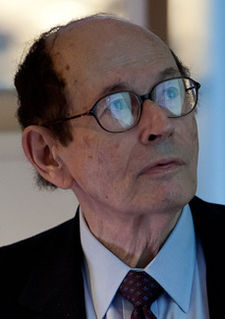 W
WGerald Maurice Edelman was an American biologist who shared the 1972 Nobel Prize in Physiology or Medicine for work with Rodney Robert Porter on the immune system. Edelman's Nobel Prize-winning research concerned discovery of the structure of antibody molecules. In interviews, he has said that the way the components of the immune system evolve over the life of the individual is analogous to the way the components of the brain evolve in a lifetime. There is a continuity in this way between his work on the immune system, for which he won the Nobel Prize, and his later work in neuroscience and in philosophy of mind.
 W
WWalter Jakob Gehring was a Swiss developmental biologist who was a professor at the Biozentrum Basel of the University of Basel, Switzerland. He obtained his PhD at the University of Zurich in 1965 and after two years as a research assistant of Ernst Hadorn he joined Alan Garen's group at Yale University in New Haven as a postdoctoral fellow.
 W
WAlexander Gavrilovich Gurwitsch was a Russian and Soviet biologist and medical scientist who originated the morphogenetic field theory and discovered the biophoton.
 W
WBerthold Hatschek was an Austrian zoologist remembered for embryological and morphological studies of invertebrates.
 W
WSir John Graham Kerr FRS FRSE FLS FZS, known to his friends as Graham Kerr, was a British embryologist and Unionist Member of Parliament (MP). He is best known for his studies of the embryology of lungfishes. He was involved in ship camouflage in the First World War, and through his pupil Hugh B. Cott influenced military camouflage thinking in the Second World War also.
 W
WAnn A. Kiessling is an American reproductive biologist and one of the leaders in human parthenogenic stem cell research at The Bedford Research Foundation. She was an associate professor in teaching hospitals of Harvard Medical School from 1985 until 2012.
 W
WFriedrich Wilhelm Theodor Kopsch was a German anatomist born in Saarbrücken.
 W
WKarl Wilhelm Ritter von Kupffer was a Baltic German anatomist who discovered stellate macrophage cells that bear his name.
 W
WArnold Lang was a Swiss naturalist, a comparative anatomist and student of German biologist Ernst Haeckel.
 W
WMargaret Adaline Reed Lewis (1881–1970) was an American cell biologist and embryologist who made contributions to cancer research and cell culture techniques, and was likely the first person to successfully grow mammalian tissue in vitro. She authored around 150 papers, many co-authored with her husband Warren Harmon Lewis. The Lewises developed a growth medium called the Locke-Lewis solution and jointly received the Gerhard Gold Medal from the Pathological Society of Philadelphia.
 W
WHilde Mangold was a German embryologist who was best known for her 1923 dissertation which was the foundation for her mentor, Hans Spemann's, 1935 Nobel Prize in Physiology or Medicine for the discovery of the embryonic organizer, "one of the very few doctoral theses in biology that have directly resulted in the awarding of a Nobel Prize". The general effect she demonstrated is known as embryonic induction, that is, the capacity of some cells to direct the developmental trajectory of other cells. Induction remains a fundamental concept and area of ongoing research in the field.
 W
WRobert Meyer was a German pathologist.
 W
WChristiane (Janni) Nüsslein-Volhard is a German developmental biologist and 1995 Nobel Prize-winner.
 W
WJulia Barlow Platt was an American embryologist, politician and mayor.
 W
WMartin Heinrich Rathke was a German embryologist and anatomist. Along with Karl Ernst von Baer and Christian Heinrich Pander, he is recognized as one of the founders of modern embryology. He was the father of chemist Bernhard Rathke (1840–1923).
 W
WAugust Rauber was a German anatomist and embryologist born in Obermoschel in the Rhineland-Palatinate.
 W
WKarl Bogislaus Reichert was a German anatomist, embryologist and histologist.
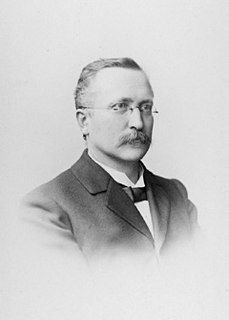 W
WWilhelm Roux was a German zoologist and pioneer of experimental embryology.
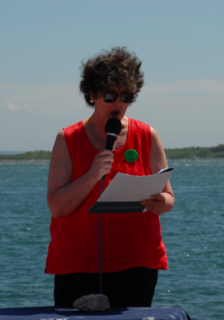 W
WJoan V. Ruderman is an American molecular and cell biologist. She is a Professor Emeritus at Harvard University and Visiting Senior Biologist at Princeton University. She has researched cell division and embryo development, and more recently the effects of, and the public understanding of, environmental estrogens and other endocrine disruptors. She was elected as a member of the United States National Academy of Sciences in 1998.
 W
WAngelo Ruffini was an Italian histologist and embryologist.
 W
WRoberts Rugh, Ph.D., radiation biologist and embryologist.
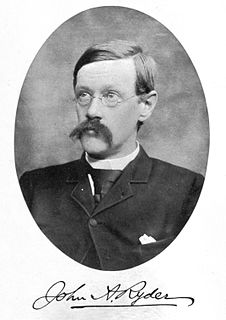 W
WJohn Adam Ryder, was an American zoologist and embryologist. He worked for the United States Fish Commission from 1880 to 1886 and Professor of Comparative Embryology at the University of Pennsylvania from 1886 to 1895.
 W
WAntoine Étienne Renaud Augustin Serres was a French physician and embryologist. Étienne Serres was the son of Jean Jacques Serres, "maître chirurgien" and Marie Roussel.
 W
WHans Spemann was a German embryologist who was awarded a Nobel Prize in Physiology or Medicine in 1935 for his discovery of the effect now known as embryonic induction, an influence, exercised by various parts of the embryo, that directs the development of groups of cells into particular tissues and organs.
 W
WProf Allen Thomson FRS FRSE FRCSE was a Scottish physician, known as an anatomist and embryologist.
 W
WGábor Vajta is a medical doctor, human pathologist and mammalian embryologist living in Cairns, Queensland, Australia. Vajta is an Honorary Professor of the BGI College, Shenzhen, China, and Adjuct Professor of the Central Queensland University, Rockhampton, Queensland, Australia. After an early career in human pathology he turned to embryology in 1989 and obtained a Doctor of Science degree in Domestic Animal Embryology at the Royal Veterinary and Agricultural University in Copenhagen, Denmark in 1999. During the past 25 years he has co-developed several patents relating to embryology, most notably the method of Handmade Cloning (HMC), the Submarine Incubation System (SIS), the Open Pulled Straw (OPS) vitrification and the Well of the Well (WOW) system. Currently Professor Vajta is director of a consulting company providing services in human and domestic animal embryology all over the world.
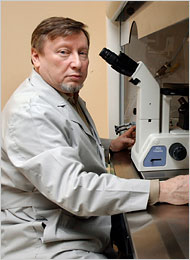 W
WYury Verlinsky was a Russian-American medical researcher specializing in embryo and cellular genetics. He is best known as a pioneer in prenatal diagnosis for detecting genetic and chromosomal disorders six weeks earlier than standard amniocentesis. The founding father of pre-implantation genetic diagnosis (PGD) and embryo analysis prior to in-vitro fertilization (IVF), Verlinsky used his polar body biopsy technique to detect potential birth defects in offspring. It is now accepted worldwide as the standard for the most efficient and effective means of analyzing the chromosomal status of an embryo.
 W
WCaspar Friedrich Wolff was a German physiologist and one of the founders of embryology.
 W
WGeraldine Pittman "Jerri" Woods was an African American science administrator. She is known for her lifelong dedication to community service and for establishing programs that promote minorities in STEM fields, scientific research, and basic research.